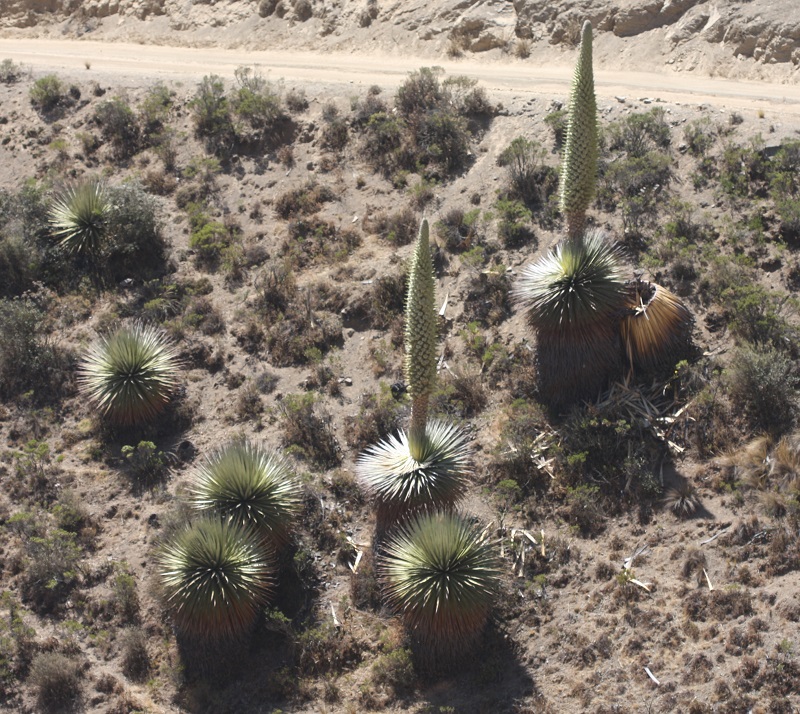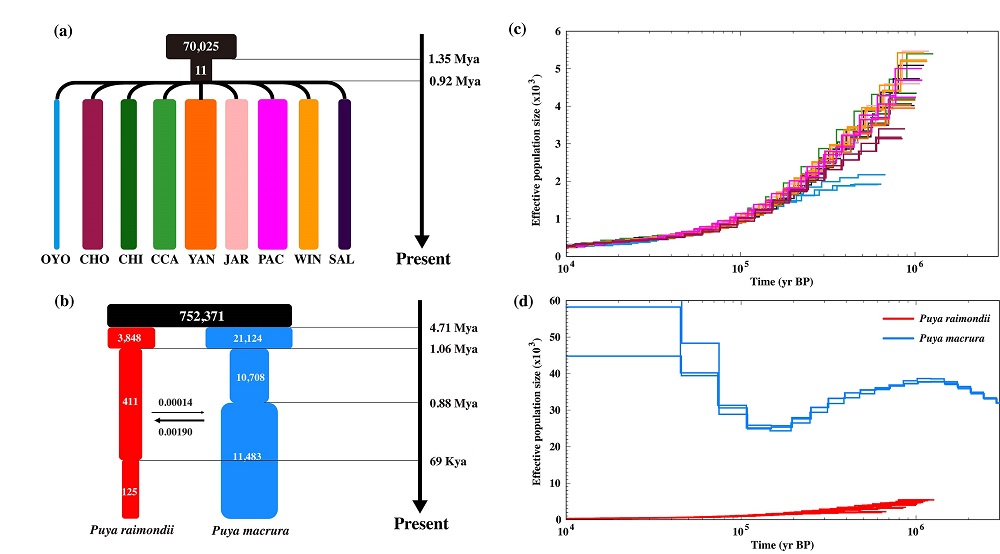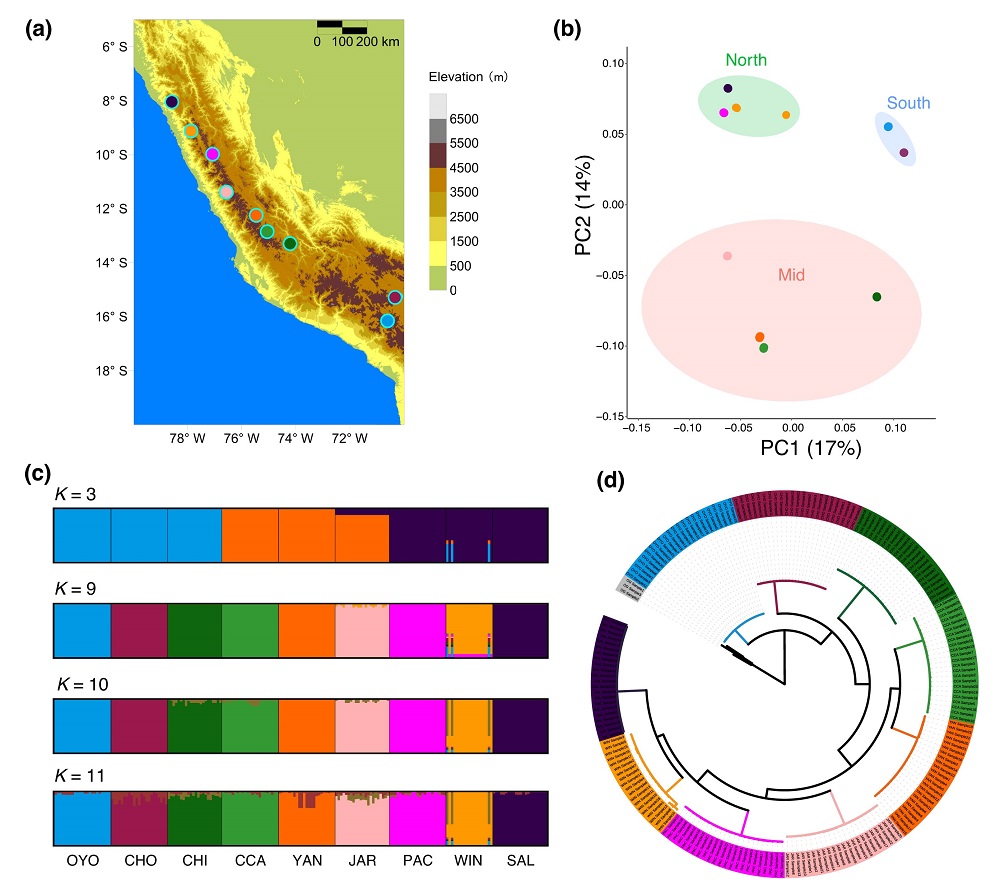Genetic consequences of long generation time and semelparity in the “queen of the Andes” (Puya raimondii)
Puya raimondii Harms (Bromeliaceae), also colloquially known as the ‘Queen of the Andes’, is an endemic species of Peru and Bolivia that occurs in often very isolated populations (Fig. 1). Its habitat ranges from 3,000 to 4,800 m above sea level (asl) in the Puna ecosystem. This long-lived semelparous plant is an iconic species in the high Andes, boasting the largest inflorescence in the plant world, with blooms reaching heights of up to eight meters, a lengthy generation time of 40-100 years and a reproductive strategy where it reproduces only once before dying. With the development of Next-Generation Sequencing technologies, conservation genomics is playing an increasingly important role in species conservation. However, there is still an incomplete picture of the conservation genomic studies on long-lived semelparous plants, such as P. raimondii.
In this study, researchers used whole genome resequencing techniques on 200 individuals of P. raimondii from 9 populations in Peru. The study estimated the nucleotide diversity of nine populations. Coalescent-based approaches were then used to infer past population dynamics. These results were compared with results obtained for the iteroparous species, Puya macrura Maz.
The results revealed that P. raimondii fail to recover after experiencing a severe bottleneck (Fig. 2). The nine populations of P. raimondii were highly divergent (Fig. 3), highly inbred, and carried low genetic diversity and an exceptionally high genetic load. However, gene flow may be utilized for genetic rescue. In addition, some balancing selection may contribute to the maintenance of genetic polymorphism within local regions. In summary, in contrast to iteroparous plants, long-lived semelparous plant, P. raimondii, is genetically fragile and fragmented. These results suggested that life history traits play an important role in species survival ability and should be taken into consideration in conservation biology and biodiversity management.
This article “The ‘queen of the Andes’ (Puya raimondii) is genetically fragile and fragmented: a consequence of long generation time and semelparity?” has been published in New Phytologist. This project was supported by the “Belt and Road” Program of the Chinese Academy of Sciences (Grant No. 151853KYSB20190027), the Guangdong Provincial Key Laboratory of Applied Botany of the South China Botanical Garden (2023B1212060046), and the China Scholarship Council. For further information, please refer to: https://nph.onlinelibrary.wiley.com/doi/10.1111/nph.20036.
First author information: Lu Liu, Post Doctor, Key Laboratory of National Forestry and Grassland Administration on Plant Conservation and Utilization in Southern China, South China Botanical Garden, Chinese Academy of Sciences. Research field: Conservation Genomics, Population Genomics. Email: luliu@scbg.ac.cn.

Fig. 1. Individuals of Puya raimondii

Fig. 2. The demographic history of populations of Puya raimondii and Puya macrura

Fig. 3. Genetic structure of the 200 individuals from 9 populations of Puya raimondii based on whole-genome resequencing data
File Download: